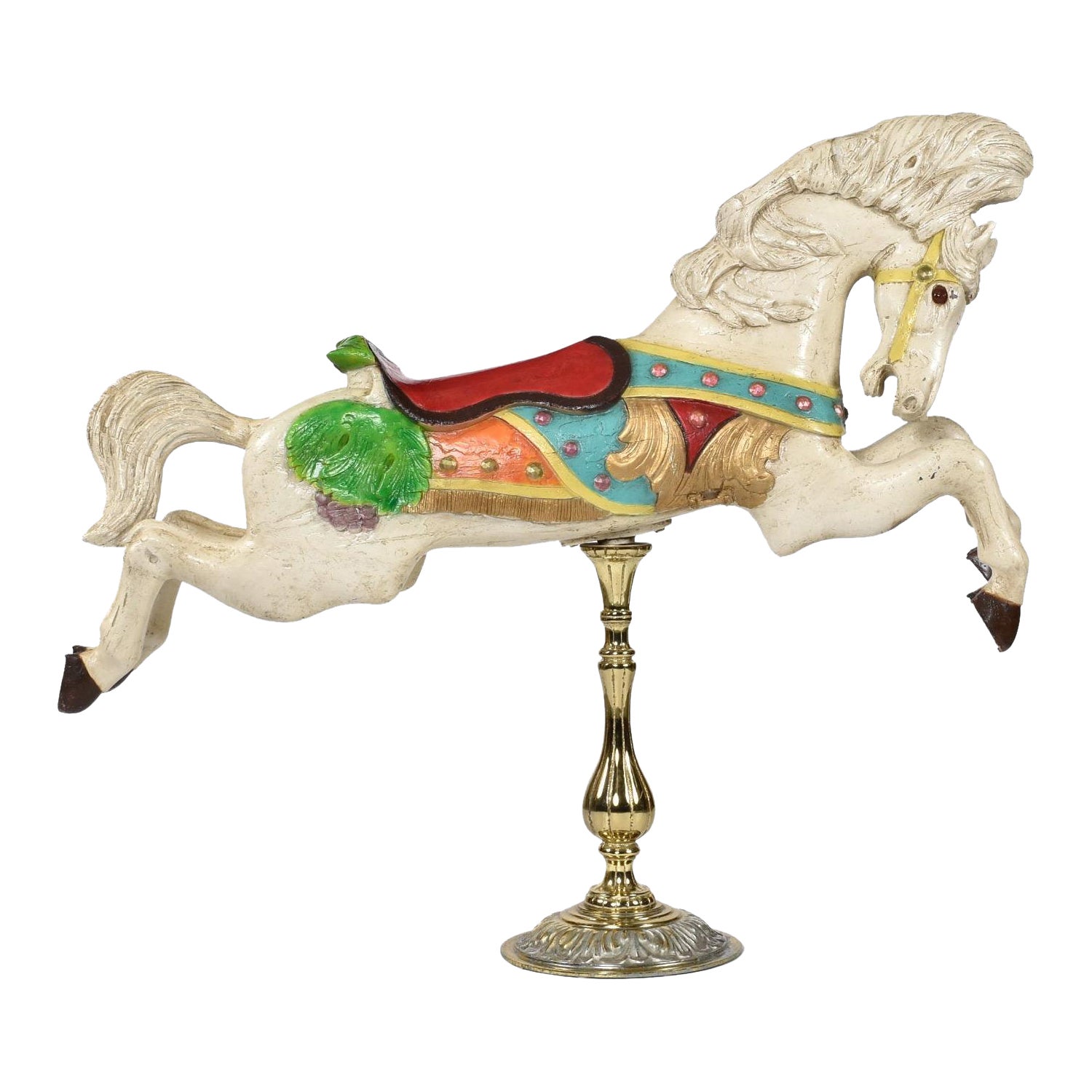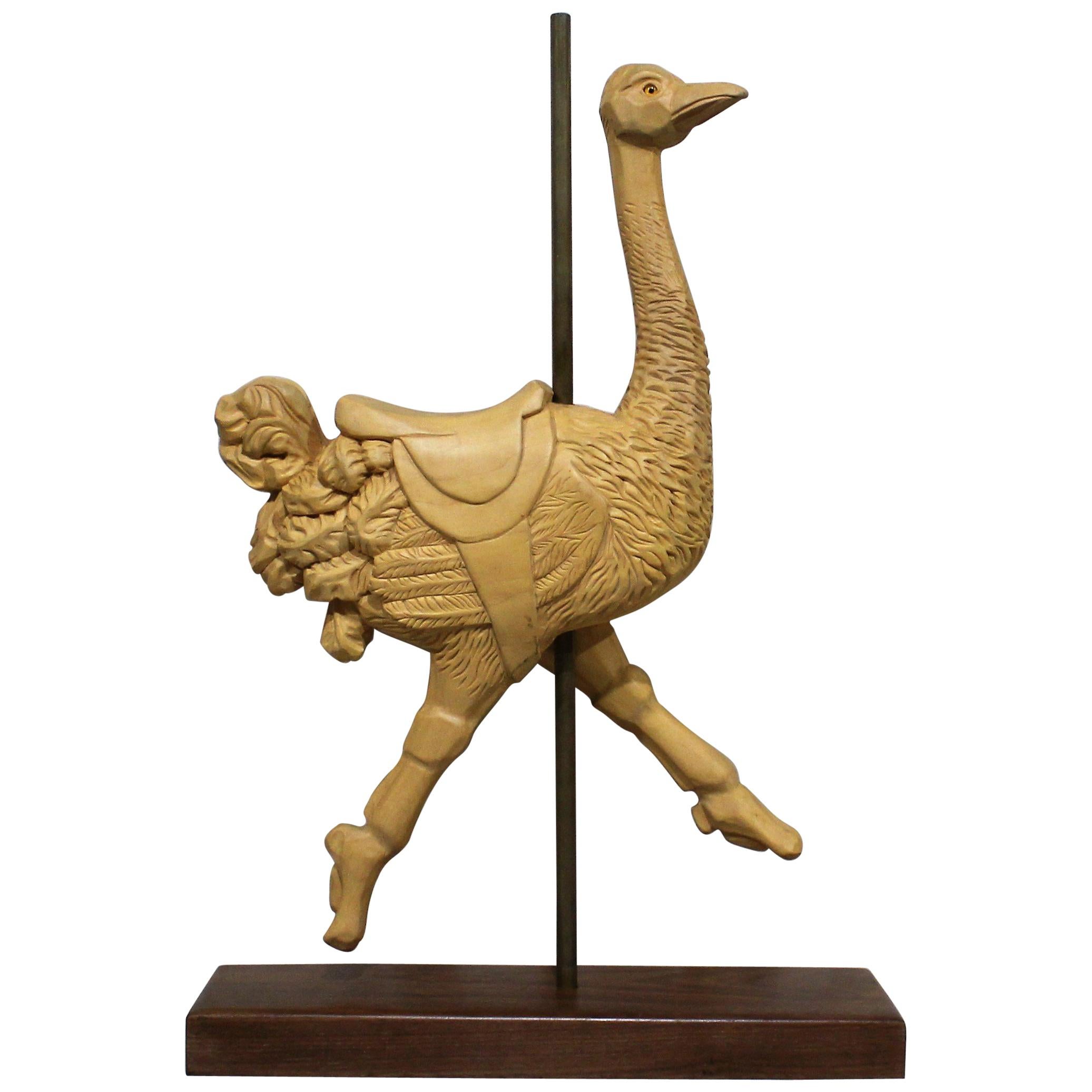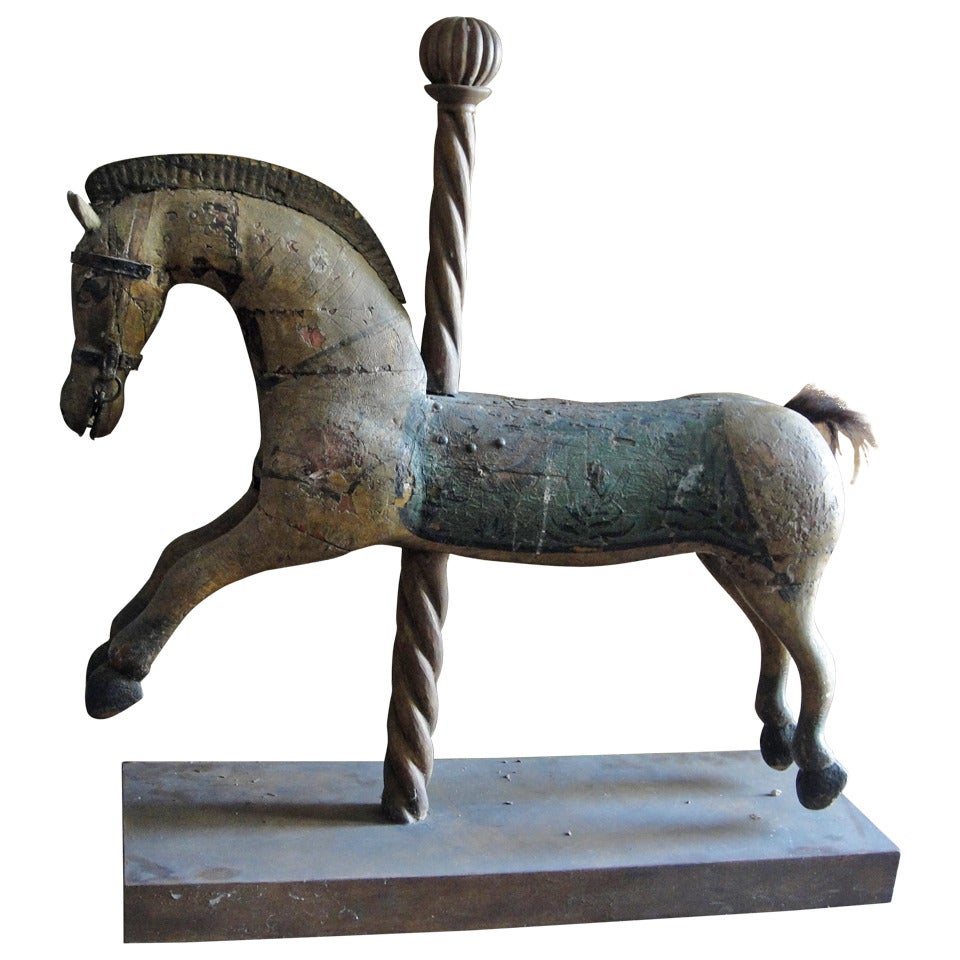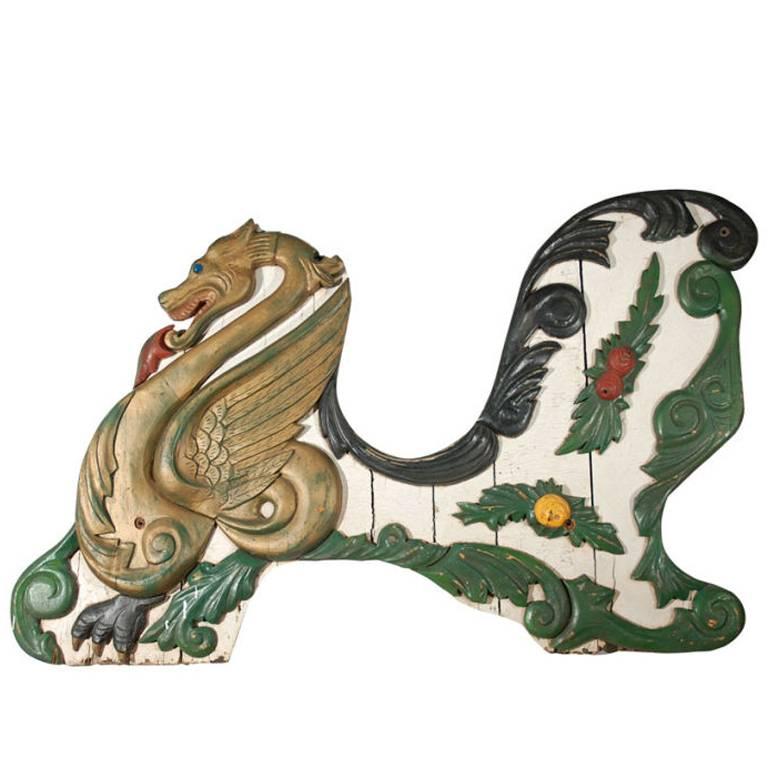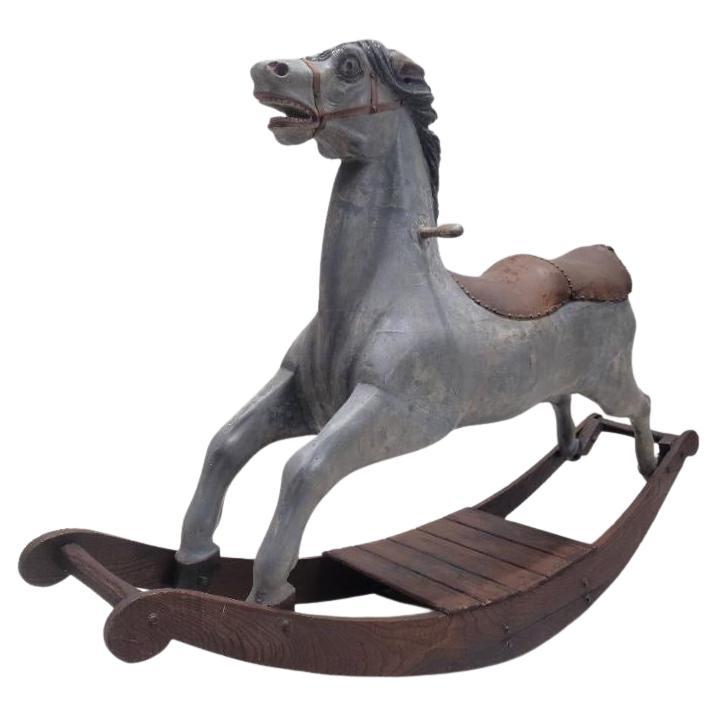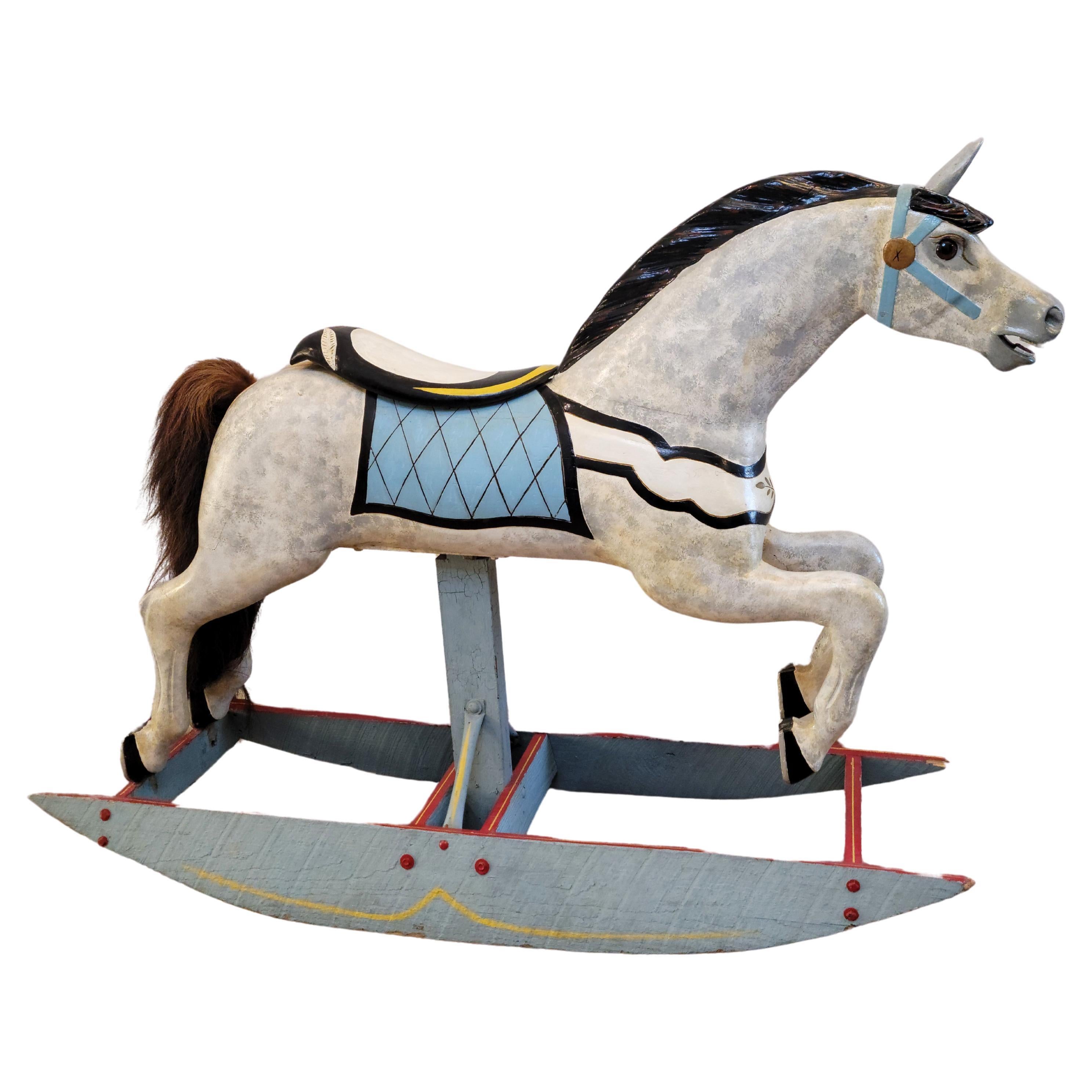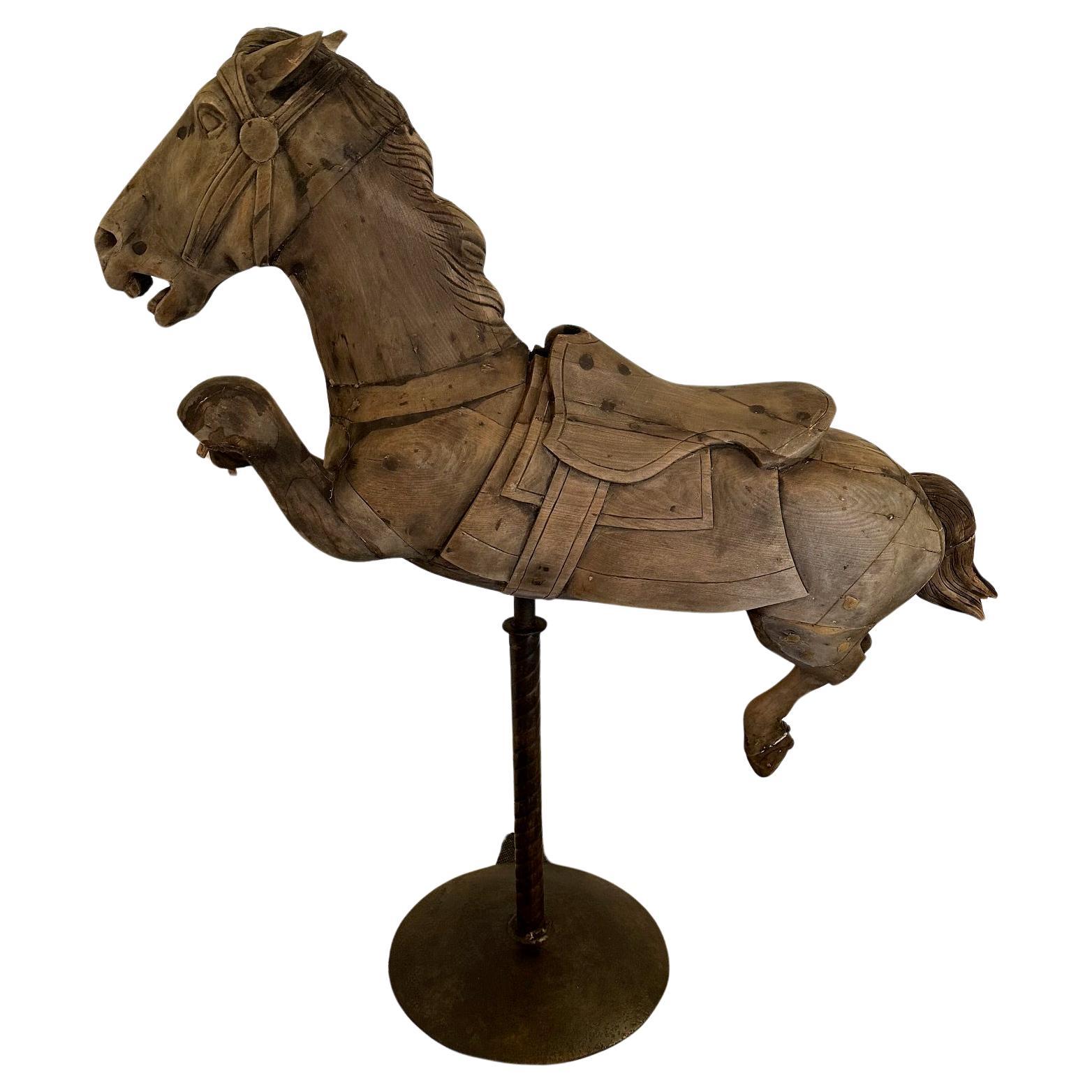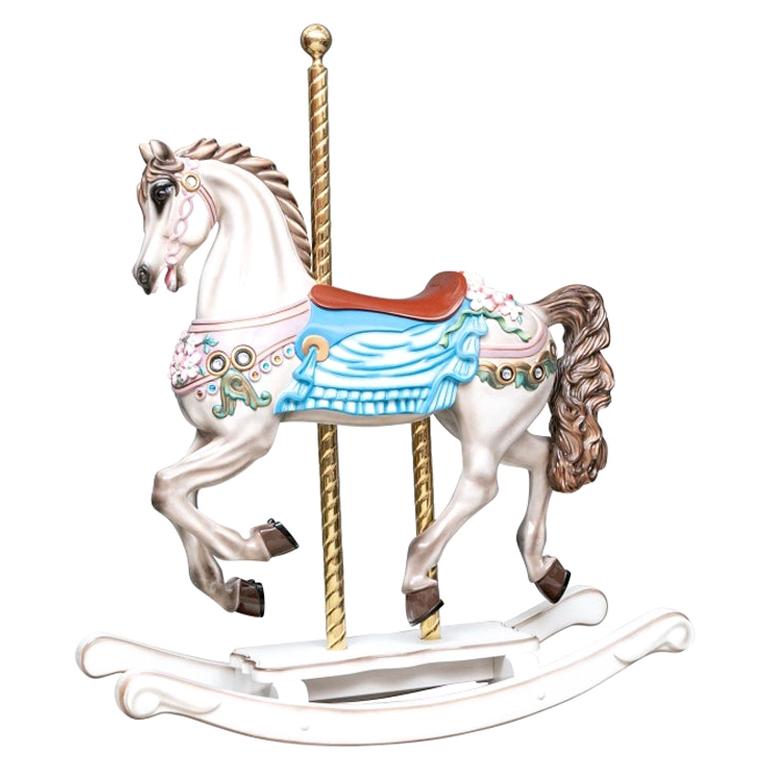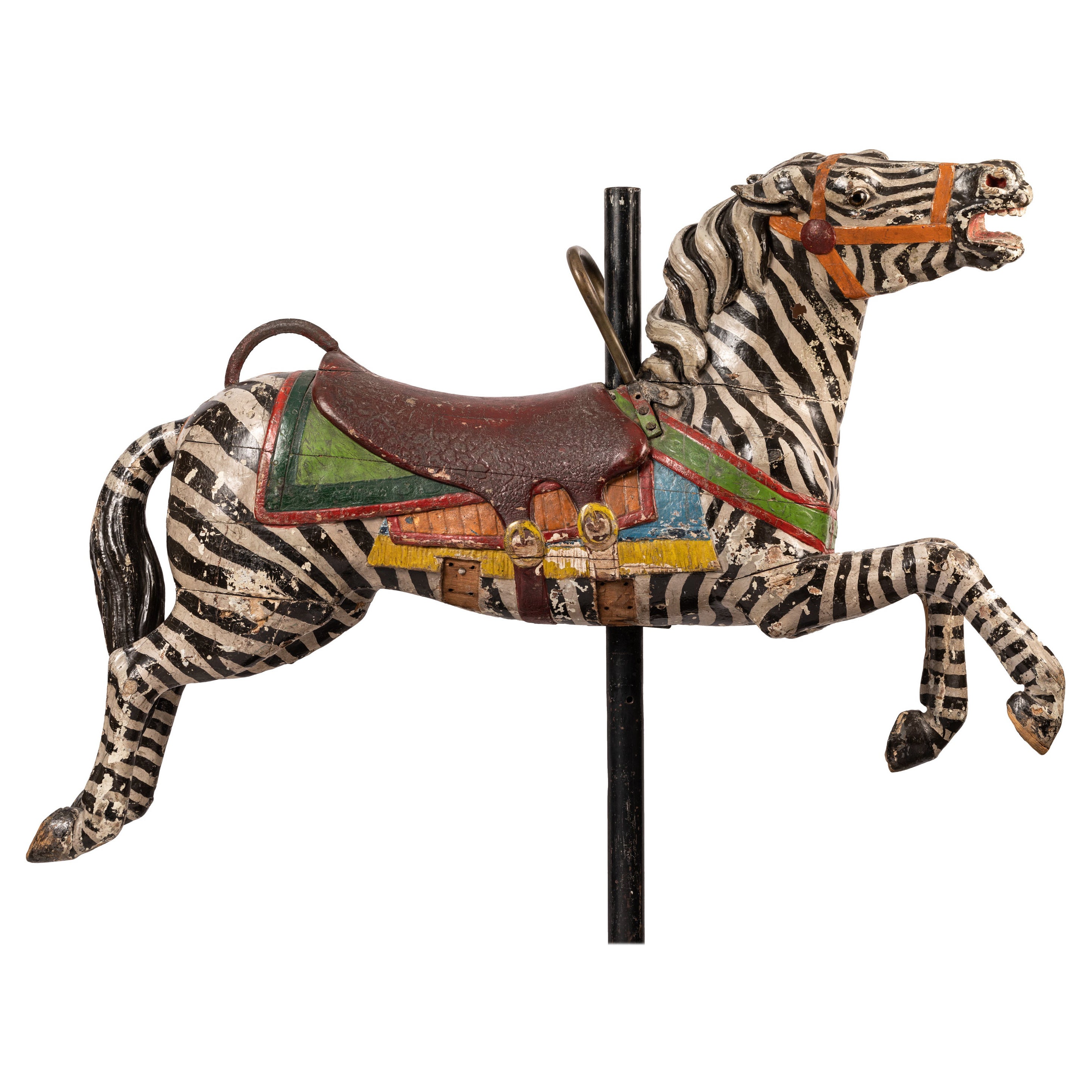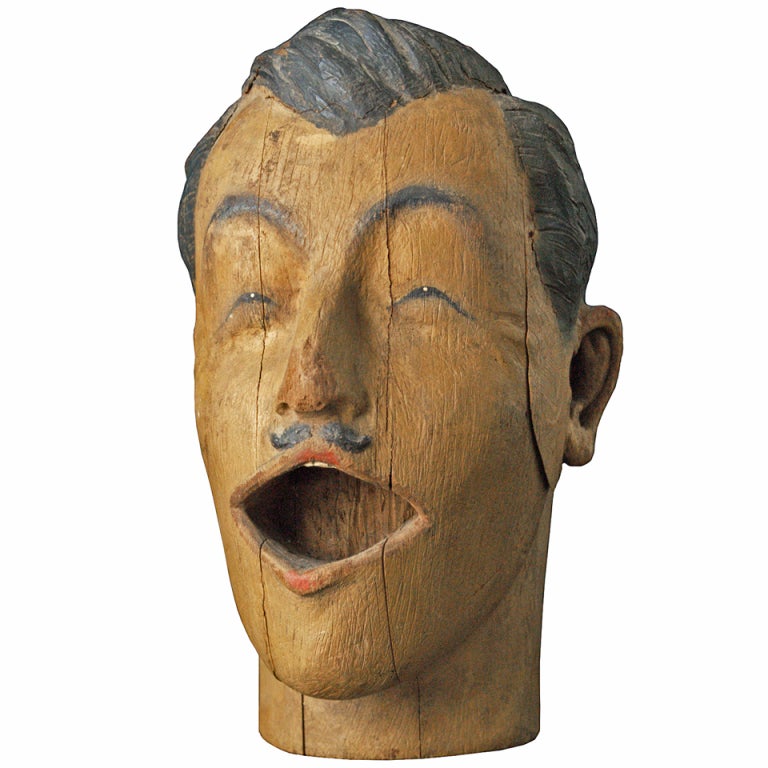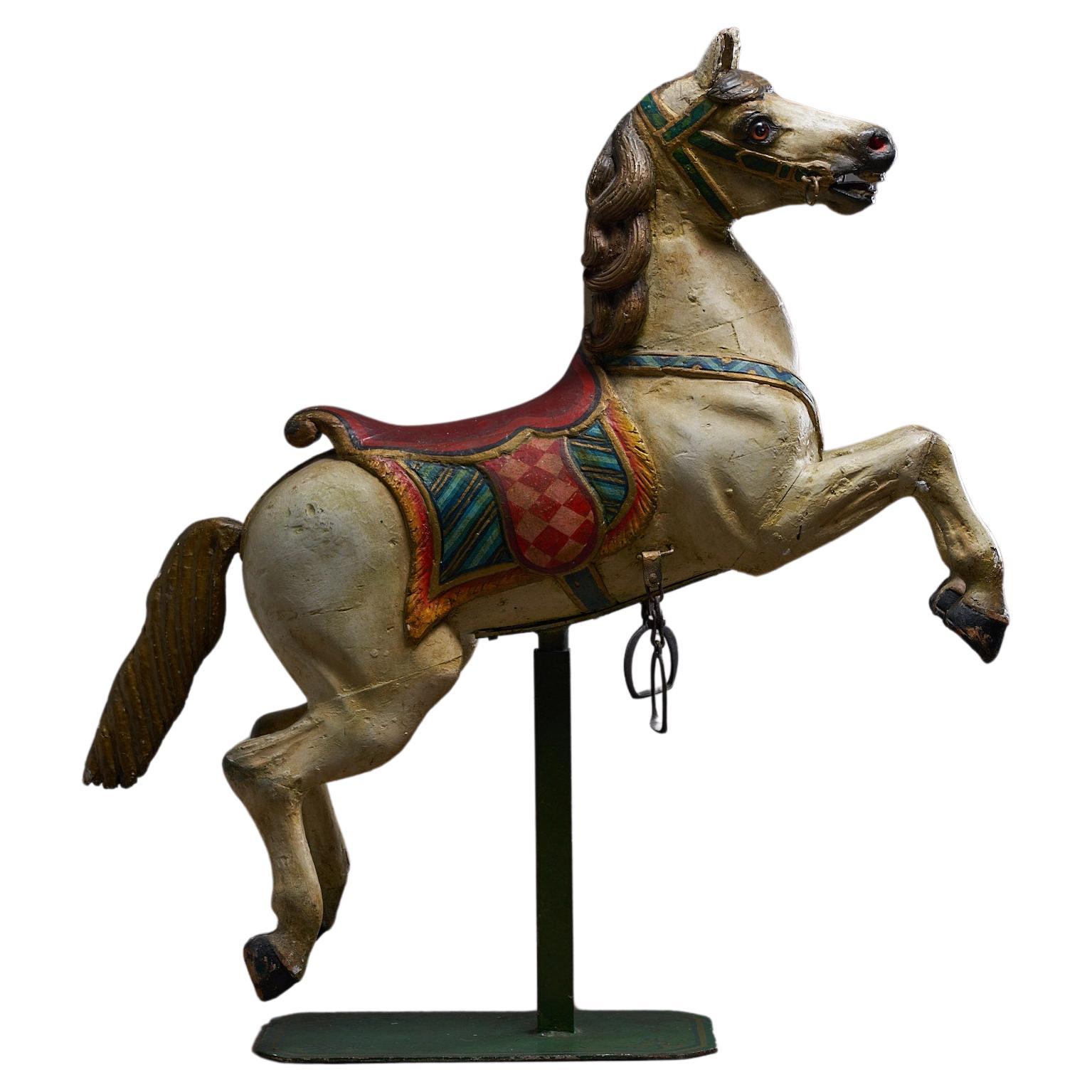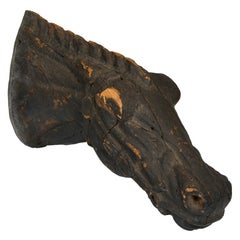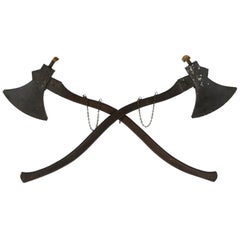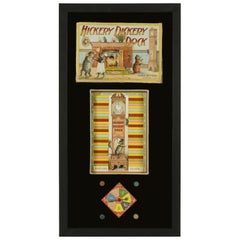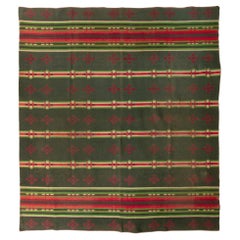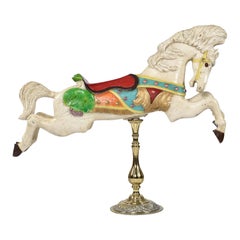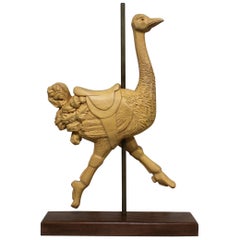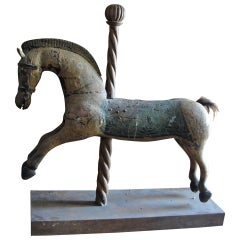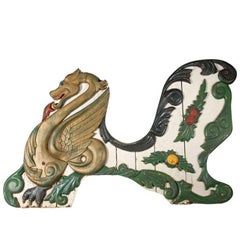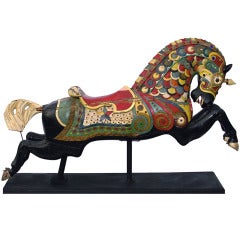
Armored Carousel Horse made by C.W. Parker in Leavenworth, Kansas circa 1915
View Similar Items
Want more images or videos?
Request additional images or videos from the seller
1 of 7
Armored Carousel Horse made by C.W. Parker in Leavenworth, Kansas circa 1915
$35,000List Price
About the Item
- Dimensions:Height: 49 in (124.46 cm)Width: 77 in (195.58 cm)
- Materials and Techniques:
- Place of Origin:
- Period:
- Date of Manufacture:ca 1915
- Condition:Minor losses. Minor structural damages.
- Seller Location:York County, PA
- Reference Number:1stDibs: LU84971044700
About the Seller
5.0
Recognized Seller
These prestigious sellers are industry leaders and represent the highest echelon for item quality and design.
Established in 1991
1stDibs seller since 2008
70 sales on 1stDibs
Typical response time: 9 hours
Authenticity Guarantee
In the unlikely event there’s an issue with an item’s authenticity, contact us within 1 year for a full refund. DetailsMoney-Back Guarantee
If your item is not as described, is damaged in transit, or does not arrive, contact us within 7 days for a full refund. Details24-Hour Cancellation
You have a 24-hour grace period in which to reconsider your purchase, with no questions asked.Vetted Professional Sellers
Our world-class sellers must adhere to strict standards for service and quality, maintaining the integrity of our listings.Price-Match Guarantee
If you find that a seller listed the same item for a lower price elsewhere, we’ll match it.Trusted Global Delivery
Our best-in-class carrier network provides specialized shipping options worldwide, including custom delivery.More From This Seller
View AllHorse Head Trade Sign, Last Quarter of the 19th Century
Located in York County, PA
An exceptional, painted American trade sign made from carved wood in the full-bodied form of a race horse’s head. Wonderful movement, tremendous f...
Category
Antique 19th Century American Folk Art Sculptures
Materials
Wood
Rare Pair of Fireman's Axe Parade Torches
Located in York County, PA
Rare pair of fireman’s axe parade torches, 1860-1880:
Pair of fireman’s axe parade torches with traditional wooden axe handles and the heads made o...
Category
20th Century American Folk Art Sculptures
$3,500 Sale Price
22% Off
Hickory Dickery Dock Early Parker Brother Board Game
Located in York County, PA
Hickory Dickery Dock: Early Parker Brothers board game with great cat & mouse and tall case clock graphics, 1900.
Patented in 1899 and produced in 1900, this colorful Parker Brother...
Category
Antique Late 19th Century North American Game Boards
Materials
Paper
Early Horse Blanket in Forest Green and Burgundy
Located in York County, PA
Loom-woven horse blanket, made circa 1890-1910. The striped and geometric pattern consists of lime green, sunfire red, and ivory, against winter/summer, reversible grounds of forest ...
Category
Antique Late 19th Century American Quilts
Materials
Wool
Colorado State Flag, Made of Silk, circa 1911-1920
Located in York County, PA
COLORADO STATE FLAG OF EXCEPTIONAL QUALITY, MADE OF SILK, CIRCA 1911-1920’s, EXTRAORDINARILY RARE IN THIS PERIOD AND THE EARLIEST EXAMPLE THAT I HAVE EVER ENCOUNTERED
Early state flags are few and far between. While I am asked for them constantly, most states did not actually have official flags until the 20th century.
On May 6th, 1911, Colorado became among the last to adopt a design. The project of doing so was spearheaded by the Denver Chapter of the Daughters of the American Revolution. The bill was introduced by Senator W.H. Sharply and adopted by the Eighteenth General Assembly. The artwork was the product of A.C. [Andrew Carlisle] Carson, President of the Ohio Society of Colorado. The meanings behind the elements in the design are as follows: The large letter "C" stands for Colorado and simultaneously for the Centennial State (Colorado entered the Union in 1876, the year in which our nation celebrated its 100th anniversary of independence), as well as the Columbine State (reflecting the state flower). The red color is included due to the fact that the word Colorado translates to scarlet or red in Spanish. The circle represents the sun, while the gold color symbolizes all-the-year sunshine, Colorado’s status as the greatest gold state, and one Columbine color. It was also included so that the Colorado state flag would have one more color than the U.S. flag. The color white reflects Colorado’s status as the greatest silver state, its eternal mountain snow, and one Columbine color. Lastly, the shade of Yale blue symbolizes all-the-year blue sky and one Columbine Color. Members of the D.A.R. were proud to note that this was also their color.
Made sometime between the initial year of the adoption of this design and the 1920’s, this particular flag is the earliest Colorado example that I have ever encountered. The blue and white bars, red “C,” and golden circle are a’’ made of silk taffeta. This was a costly fabric, reserved for the best material a flag-maker produced. The flag is constructed in the manner of a battle flag, to be carried on foot. Squarish in its overall profile, silk was the fabric of choice for flags employed in this function, due to the fact that it was light weight, and thus practical for hand-carrying, while simultaneously formal in appearance, appropriate for the sort of ceremonial use that military presentation often demands. The style of the hoist is also typical for field or parade use. Here the fabric was rolled over to form an open sleeve, through which a wooden staff could be inserted. The sleeve is lined on the interior with black cotton. Leather tabs, at the top and bottom, fit over metal posts on the staff, designed to accept them, to fix the flag in its proper position.
The bars were pieced and joined with lineal machine stitching. The hoist and fly ends were finished and hemmed by the same method. The devices are double-appliquéd (applied to both sides) with a machine buttonhole / blanket stitch. Though machines that produced buttonholes were, remarkably, available alongside the earliest standard machines, in the 1850’s and 60’s, the use of this sort of stitch in a running format, for appliqué work, remained highly unusual, even as late as the first half of the twentieth century, probably because it used a ton of thread when compared to the zigzag or satin stitch. It could be expected to appear more often in the hands of a maker of very fine flags, that employed embroidery machines and commissioned custom, fancy work of all sorts. Though unsigned—in no way uncommon in early examples, which were seldom signed—that is precisely the sort of firm that produced the Colorado flag...
Category
Early 20th Century American Political and Patriotic Memorabilia
Materials
Silk
Price Upon Request
34 Star Antique American Parade Flag, Kansas Statehood, ca 1861-1863
Located in York County, PA
34 STAR ANTIQUE AMERICAN FLAG WITH A LINEAL ARRANGEMENT THAT I HAVE TERMED "GLOBAL ROWS, WITH EXCEPTIONAL COLOR AND CRUDE YET BEAUTIFUL FEATURES, OPENING TWO YEARS OF THE CIVIL WAR, ...
Category
Antique 1860s American Political and Patriotic Memorabilia
Materials
Cotton
Price Upon Request
You May Also Like
Hand Painted Midcentury Resin White Jumper Carousel Horse by C.W. Parker
By Charles Looff Or C.W. Parker
Located in Chattanooga, TN
Perfectly captured in all it’s glory, this vintage C.W. Parker carousel horse is sure to gallop your heart. One look at this radiant mare, and you’ll see why. The animal’s strength a...
Category
Mid-20th Century Unknown Folk Art Carnival Art
Materials
Brass
$2,396 Sale Price
20% Off
Carousel Ostrich Sculpture
Located in Hamilton, Ontario
Hand carved wood sculpture of carousel ostrich.
Category
Vintage 1980s Animal Sculptures
Materials
Wood
$795 Sale Price
36% Off
Vintage Carousel Horse
Located in Napa, CA
Vintage Carousel Horse believed to be from the 18th century with wonderful worn distress finish.
Category
Antique 18th Century and Earlier Carnival Art
$7,500
Parker Carousel Company Wood Carved Chariot Side
By John Adams Parker
Located in Santa Monica, CA
Carved wood Parker Carousel chariot side. Fantastic carved dragon with the original jewel eye.
Category
Early 20th Century American Steampunk Carnival Art
Materials
Wood
1920s American Carousel Horse
Located in Tetbury, Gloucestershire
A decorative 1920s carved wood American carousel horse, in original paint. Rests on a later made stand.
Category
20th Century American Carnival Art
Materials
Wood
Antique French Double Seater Carousel Rocker Horse
Located in Chicago, IL
Antique French Double Seater Carousel Rocker Horse
Beautiful antique French double seat carousel rocking horse. The horse is carved wood and h...
Category
Antique 19th Century French Belle Époque Carnival Art
Materials
Leather, Wood
Recently Viewed
View AllMore Ways To Browse
Used Furniture In Arkansas
Horse Shoe Art
Outdoor Shoe
Charles Forge
Helmers Antique Furniture
Shoe Last
Antique Carousel Horse
Wood Carousel Animals
Antique Shoe Lasts
Carved Carousel Horses
Carousel Ride
Antique Shoe Last
Carnival Ride
Wood Shoe Last
Carousel Jewels
Antique Gutters
Hand Carved Carousel Horse
Carousel Horses
